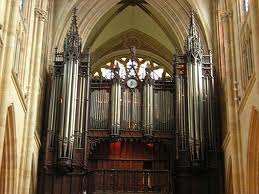César Franck was 66 when he completed the Symphony in D minor, his only symphony.
It premiered the next year, on February 17, 1889, nine months before the composer’s death. Performed by the orchestra of the Paris Conservatory under the direction of Vincent d’Indy, it was a complete catastrophe. Only now, more than 130 years later, can we see that the features which caused the negative turmoil at the premiere are precisely what cause our admiration today: the symphony’s then atypical three-movement structure, its extremely dense (at times almost Wagnerian) texture, and its organ-like overall sound.
The symphony is in three movements with the first having probably the most peculiar structure of the three. It is a richly modified sonata movement in which, not the themes, but the two tempos (Lento and Allegro non troppo) define the development. The heavy and dark introduction sets the main question of the symphony and a quick answer follows at the beginning of the Allegro. The symphony’s first surprise occurs when, in the middle of the allegro exposition, Franck returns us to the very beginning of the story by reintroducing the entire introduction, this time not in D minor, but in F minor. A second Allegro non troppo takes over leading us successfully out of the darkness. The final appearance of the Lento at the very end of the first movement brings a bright apotheosis.
The second movement is a unique hybrid of an old ballad and a scherzo that is directly derived from the ballad material. The scherzo starts as a harmless tremolo in the strings and grows monumentally toward the end of the movement. The expressive solo of the English horn at the very beginning of the movement was only one of the specific reasons for the conservative audience of Paris rejecting the work — in those days an English horn solo would be expected in an opera but not in a symphony.
The third movement begins with a stormy tremolo in the strings that is quickly interrupted by five short and powerful chords leading us to a movement that is simply a triumph of thematic richness and formal fantasy. This is also the movement in which the global plan of the symphony is revealed to us in the form of the reappearing ballad, but now heroic and with full-pipe organ volume.
Symphony in D minor
M. 48
Composed in 1888
By Cesar Franck






